Digital Marketing Services
With search engines and social media apps being the two most
prominent platforms for digital marketing, our services are aimed
at giving your business extract the best of the two worlds.
Given that the online world is a vast virtual space, it is important to figure out where the audiences are. This is important because digital marketing efforts have to be in the right places. In retail, businesses do not place advertisement hoardings at places where it is not likely for their targeted customers to see them. For example, a fast-food joint would prefer to run promotional campaigns in front of university campuses rather than fitness clubs.
When it comes to digital marketing for retail & online business, there are two big places to consider – search engines and social media. As customers, we are heavily dependent on search engines for information on products and services; opening up the floodgates of promotional opportunities for businesses. And with the increasing dominance of social media in our lives on all counts, the element of business advertising and promotion is already driving the engines of many social media platforms.
Keeping these two broad pies of the online world, our digital marketing services are focused on achieving excellence in Search Engines and Social Media – the two most important channels of digital or online marketing for e-commerce businesses.

Search Engine Optimization (SEO)
No one would have thought that search engines could become such a powerful platform for information dissemination. And with time, its commercial utility began to unfold. And that utility is visibility and more precisely, online visibility. There are millions of e-commerce businesses with an online presence and each craving to be visible to their audiences – the millions of people using search engines. This has left businesses running to better understand search engines and use them to their advantage.
- Search queries :
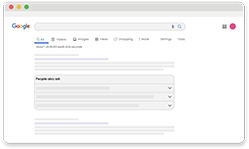 To put things in perspective, Google registered 3.8 million search queries per minute in 2019. With each search query, there is a result page (known as Search Engine Result Page). That is where the visibility factor comes in. That is where users see the results for his search queries. What it takes to be visible there is what an SEO strategy is all about.
To put things in perspective, Google registered 3.8 million search queries per minute in 2019. With each search query, there is a result page (known as Search Engine Result Page). That is where the visibility factor comes in. That is where users see the results for his search queries. What it takes to be visible there is what an SEO strategy is all about.
- What are people searching online?
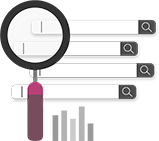 There are millions of people around the world who are searching for one thing or the other on search engines. What exactly are they seeking? How do we make sense of it? Fortunately, we need not answer these questions in such a generic form and we can narrow down our focus to our relevance. So, a good question would be – can your brand name or website show up in the SERPs when a query related to your business is searched for? If you can do this, your business name will appear as one of the ‘answers’ to ‘questions’ when people use search engines. The earlier your business’s brand name or website appears in the SERP, the better are the chances of audiences (potential customers/clients) visiting your
There are millions of people around the world who are searching for one thing or the other on search engines. What exactly are they seeking? How do we make sense of it? Fortunately, we need not answer these questions in such a generic form and we can narrow down our focus to our relevance. So, a good question would be – can your brand name or website show up in the SERPs when a query related to your business is searched for? If you can do this, your business name will appear as one of the ‘answers’ to ‘questions’ when people use search engines. The earlier your business’s brand name or website appears in the SERP, the better are the chances of audiences (potential customers/clients) visiting your
will appear as one of the ‘answers’ to ‘questions’ when people use search engines. The earlier your business’s brand name or website appears in the SERP, the better are the chances of audiences (potential customers/clients) visiting your
- Understanding digital visibility :
- How we can help?
Our SEO services are focused to ensure that your business name/website performs well in terms of visibility in the SERPs with the eventual goal of driving relevant web traffic from the popular search engines.

Social Media Marketing (SMM)
Social media has two faces – one for its general users and two, for businesses, organizations, and professionals with promotional and advertising intent. As general consumers of social media, we use various platforms for personal use. But as business or professional entities, the same social media platforms become an excellent tool for promotion and advertising. This second face of social media emerges from its first face.
- Statistical backup :
- Business utility of social media :
 Social media users are also consumers and customers with varied nature of needs in terms of products and services. For businesses who deal in or offer such products and services, for them the social media has turned out to be a big window to reach out to billions of people and potential customers. With the ever-increasing footprint of digital presence in the lives of the common people, business advertising opportunities only get more exciting.
Social media users are also consumers and customers with varied nature of needs in terms of products and services. For businesses who deal in or offer such products and services, for them the social media has turned out to be a big window to reach out to billions of people and potential customers. With the ever-increasing footprint of digital presence in the lives of the common people, business advertising opportunities only get more exciting.
- Advertising through social media :
 What has emerged from this is Social Media Marketing – a tool for businesses to harness the wide outreach of social media among the masses for advertising or promotional purpose. A few common manifestations of social media marketing are the sponsored posts on Facebook or influencers promoting products on Instagram or the advertising videos on YouTube or TikTok and so on. The list just goes on. If audience is present in a platform, concerned businesses direct their advertising efforts on those platforms. Going a step ahead, now companies are also bridging the gap between the products and customers by bringing in the ‘shoppable posts’ move. The innovations have to get sharper and more efficient in a post-lockdown world. Businesses and social media will have a much bigger role to play in the next five years. It will not be just about money but creating sustainable value systems.
What has emerged from this is Social Media Marketing – a tool for businesses to harness the wide outreach of social media among the masses for advertising or promotional purpose. A few common manifestations of social media marketing are the sponsored posts on Facebook or influencers promoting products on Instagram or the advertising videos on YouTube or TikTok and so on. The list just goes on. If audience is present in a platform, concerned businesses direct their advertising efforts on those platforms. Going a step ahead, now companies are also bridging the gap between the products and customers by bringing in the ‘shoppable posts’ move. The innovations have to get sharper and more efficient in a post-lockdown world. Businesses and social media will have a much bigger role to play in the next five years. It will not be just about money but creating sustainable value systems.
- How we can help?
Our SEO services are focused to ensure that your business name/website performs well in terms of visibility in the SERPs with the eventual goal of driving relevant web traffic from the popular search engines.
Get Advice for Digital Marketing
Related Blogs
Making the most out of the festive season shopping: A Customer Perspective for Retailers
Decoding the Festive Shopping Spree For us, as customers, the festive season is a licence to spend. The vibes of festivity ushers with joy and a sense of celebration. This elevated mood often turns into an enhanced willingness to spend and indulge in shopping. It is a...
Mitigating Business Risks in Retail
Spotting the Swirls Sailing the stream of retail is canopying between opportunities on the surface and risks as the current of that stream. If the bad swirls are not spotted in advance, it can turn things undesirable. While big brands grapple with issues like lapses...
How Retailers are Enhancing Customer Experience (CX) with Hyper-Localisation
Hyper-localisation is an alignment strategy that helps retail brands and businesses mould into the requirements of a locality-based market environment. Marketing-wise, it helps retailers tailor their value propositions to cover the needs and expectations of highly...


 An easy way of looking at it is the retail perspective. When customers visit a physical market, they either already know which stores to visit or they may search for the right stores to get what they are looking for (the latter is the case of potential customers using search engines). Understandably, the relevant stores which first come to the sight of the customers (better position in SERP) stand much better chances of being visited over stores whose visibility comes later (lower positions in SERP).
An easy way of looking at it is the retail perspective. When customers visit a physical market, they either already know which stores to visit or they may search for the right stores to get what they are looking for (the latter is the case of potential customers using search engines). Understandably, the relevant stores which first come to the sight of the customers (better position in SERP) stand much better chances of being visited over stores whose visibility comes later (lower positions in SERP).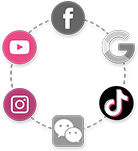 Social media penetration reached 45% as of January 2019 (that is approximately more than 2.65 billion people). The market is dominantly shared by major players like Facebook, Google, WeChat, TikTok, etc. But what is more important is the sheer size of this market in terms of the number of users. Additionally, people are also spending a lot of time on social media (the world average stood at 144 minutes per day of internet users as of 2019). With these kinds of supporting statistics, social media has a lot to offer from a business and marketing perspective.
Social media penetration reached 45% as of January 2019 (that is approximately more than 2.65 billion people). The market is dominantly shared by major players like Facebook, Google, WeChat, TikTok, etc. But what is more important is the sheer size of this market in terms of the number of users. Additionally, people are also spending a lot of time on social media (the world average stood at 144 minutes per day of internet users as of 2019). With these kinds of supporting statistics, social media has a lot to offer from a business and marketing perspective.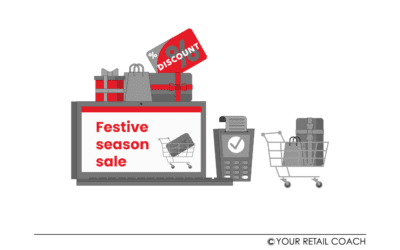
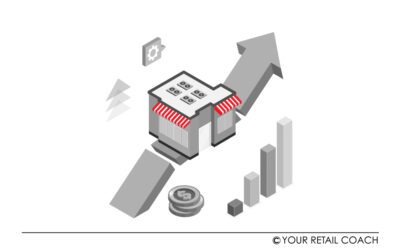

We work only for Visionaries.